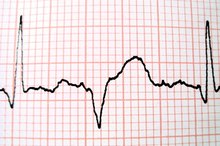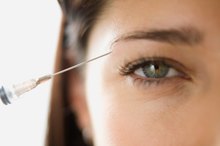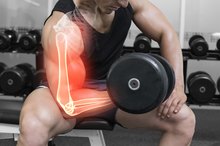A systems of the human body consist of specific organs, tissues and cells that work together to perform specific functions 2. These body systems work in complementary ways to maintain your overall health. Your body systems include the endocrine, nervous, musculoskeletal, urogenital, respiratory, circulatory, immune and digestive systems, as well as the skin and related structures.
Integumentary System
The integument describes the outer covering of the body, which provides protection and acts as the first line of defense against the environment and germs. The integumentary system includes your skin, hair, nails, and oil and sweat glands. Your skin, hair and nails are largely protective, while sweat glands help control your body temperature and assist with waste excretion. Oil glands help keep your skin moist. Additionally, nerve receptors in your skin provide information about touch, heat, cold and pain.
- The integument describes the outer covering of the body, which provides protection and acts as the first line of defense against the environment and germs.
- Your skin, hair and nails are largely protective, while sweat glands help control your body temperature and assist with waste excretion.
Musculoskeletal System
Body Systems & Nutrition
Learn More
The bones, cartilage, ligaments and muscles of your musculoskeletal system give your body shape and support, and enable voluntary movement. In addition to protecting internal organs, your bones serve as attachment points for your muscles and tendons, produce blood cells, and act as calcium and phosphorus storage banks.
Nervous System
The nervous system includes your brain, spinal cord, nerves and sense organs, such as your eyes and ears. This system receives, transmits and integrates information from inside and outside the body. Your brain and spinal cord form the central nervous system, while the peripheral division of the nervous system includes sensory organs and all the nerves that connect your spinal cord to the rest of your body.
Respiratory System
How Does the Cardiovascular System Help Maintain Homeostasis?
Learn More
The respiratory system begin at your nose and includes your upper airway and lungs. This system enables gas exchange between your blood and your body's external environment. Specifically, your respiratory system takes in oxygen from the air you breathe and expels other gases such as carbon dioxide, which is a byproduct of cellular metabolism.
Circulatory System
The circulatory system consists of cardiovascular and lymphatic divisions. The cardiovascular division transports materials within your body and includes your heart, blood and blood vessels. The lymphatic division helps maintain fluid balance and aids in defending you against infectious diseases. The lymphatic system includes the lymph glands and vessels, and the spleen, thymus and tonsils.
- The circulatory system consists of cardiovascular and lymphatic divisions.
- The cardiovascular division transports materials within your body and includes your heart, blood and blood vessels.
Digestive System
Your mouth, esophagus, stomach and bowels make up the digestive system. These structures and organs enable you to take in and digest food, and absorb nutrients into the bloodstream for use by the body. Your salivary glands, liver, gallbladder and pancreas facilitate these processes by releasing digestive juices into your digestive system.
- Your mouth, esophagus, stomach and bowels make up the digestive system.
- Your salivary glands, liver, gallbladder and pancreas facilitate these processes by releasing digestive juices into your digestive system.
Urogenital System
The urogenital system includes the reproductive organs and urinary system. The testes, ovaries and their associated structures enable reproduction. In the urinary division, your kidneys, bladder and their associated ducts enable removal of excess water, metabolic waste and unneeded substances from your body.
Endocrine System
The endocrine system consists of a network of glands that release hormones to regulate various body functions. The system controls growth, metabolism and sexual development and function.
Immune System
The immune system protects your body against harmful organisms, such as bacteria, viruses and parasites. The immune system includes the lymph nodes and an array of specialized cells that patrol your body organs and tissues and fight invading germs. Immune cells produce many types of specialized proteins that aid in the protective function of this system.
Reviewed by: Tina M. St. John, M.D.
- The immune system protects your body against harmful organisms, such as bacteria, viruses and parasites.
- The immune system includes the lymph nodes and an array of specialized cells that patrol your body organs and tissues and fight invading germs.
Related Articles
References
- Hollinshead's Textbook of Anatomy, 5th Edition; Cornelius Rosse, M.D. and Penelope Gaddum-Rosse, Ph.D.
- Encyclopedia of Human Body Systems; Julie McDowell
- Anatomy and Physiology, 2nd Edition; Lippincott, Williams and Wilkins
- How does the blood circulatory system work? InformedHealth.org [Internet]. January 2019.
- Overview of the Lymphatic System. Merck Manuals. July 2019.
- Overview of the Respiratory System. Merck Manuals. June 2019.
- Endocrine Glands. Merck Manuals. April 2019.
- Overview of the Digestive System. Merck Manual. September 2019.
- Overview of the Urinary Tract. Merck Manual. June 2019.
- Overview of the Musculoskeletal System. Merck Manuals.
- Overview of the Nervous System. Merck Manual. March 2018.
- Overview of the Immune System. Merck Manual. December 2019.
Writer Bio
Suzanne Fantar has been writing online since 2009 as an outlet for her passion for fitness, nutrition and health. She enjoys researching and writing about health, but also takes interest in family issues, poetry, music, Christ, nature and learning. She holds a bachelor's degree in biological sciences from Goucher College and a MBA in healthcare management from the University of Baltimore.









